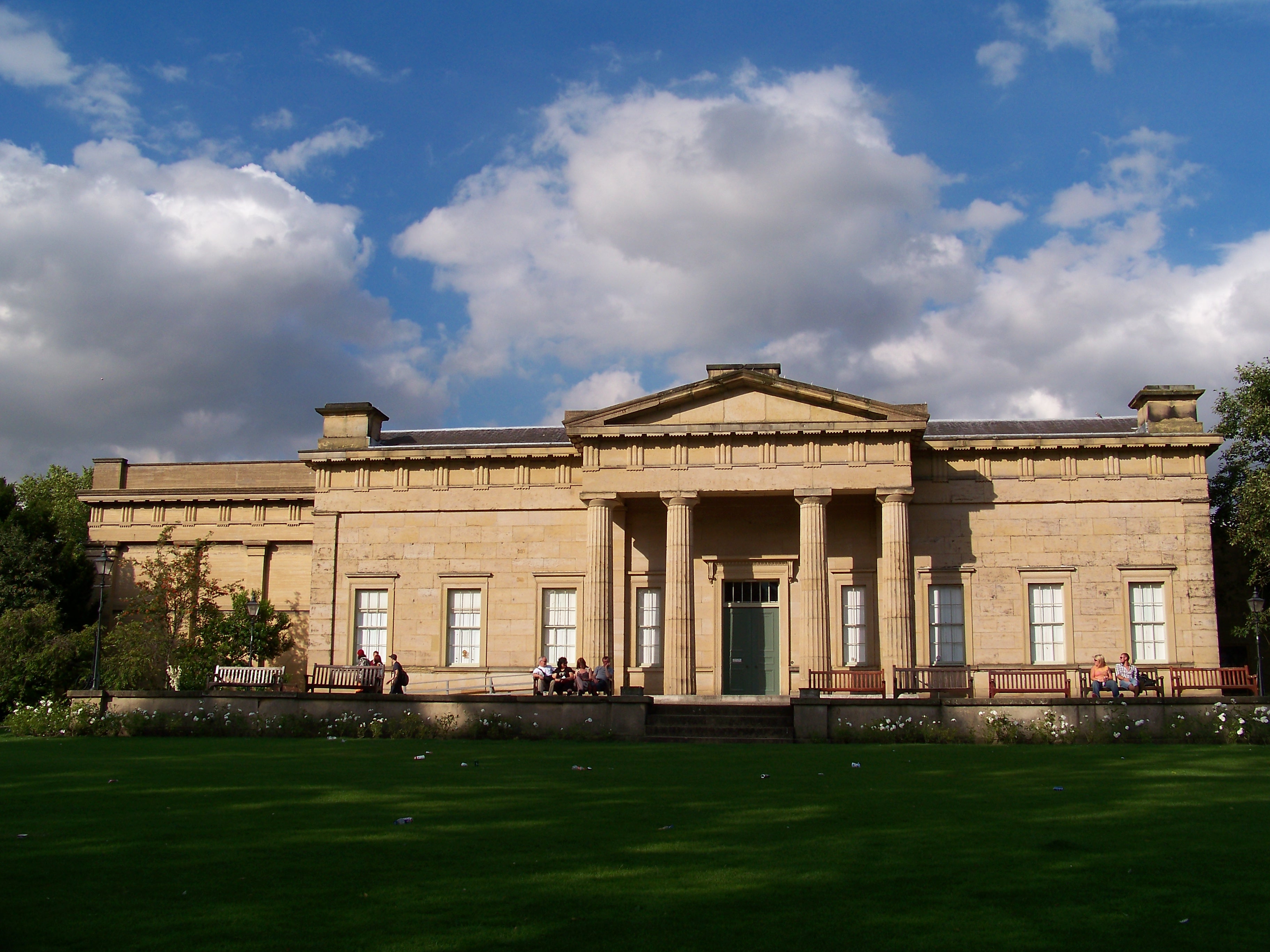- Yorkshire Museum
Infobox Museum
name = Yorkshire Museum
imagesize = 200
established = 1830
location =York ,England
type =
visitors =
director = Mary Kershaw
curator =
publictransit=
website = [http://www.yorkshiremuseum.org.uk www.yorkshiremuseum.org.uk] The Yorkshire Museum is amuseum inYork ,England . It is the home of theCawood sword , and has four permanent collections, coveringbiology ,geology ,archaeology andastronomy .History
The Museum was founded by the
Yorkshire Philosophical Society to accommodate their geological and archaeological collections, and was originally housed in Ousegate, York until the site became too small. In 1828 the society received byroyal grant , tenacre s (0.040km ²) of land formerly belonging toSt. Mary’s Abbey in order to build a new museum. The main building of the museum is called the Yorkshire Museum and was designed by William Wilkins in aGreek Revival style. It is a Grade Ilisted building . It was officially opened in February 1830, which makes it one of the longest established museums in England. A condition of the royal grant was that the land surrounding the Museum building should be abotanic gardens ; this was done in the 1830s, and they are now known as theMuseum Gardens . On the26 September 1831 the inaugural meeting of theBritish Association for the Advancement of Science was held at the Yorkshire Museum. [Willis, Ronald (1988), "The illustrated portrait of York", Robert Hale Limited, 4th Edition, ISBN 0-7090-3468-7, Page 176.]In 1960, the Museum along with the Museum Gardens, were given in trust to York City Council, its successor the City of York Council in 2002 set up the
York Museums Trust to manage theYork Castle Museum ,York Art Gallery , the Yorkshire Museum and the Museum Gardens. [http://www.yorksphilsoc.org.uk/history.html "Yorkshire Philosophical Society history"] , Yorkshire Philosophical Society (2007), retrieved on24 June 2007 ] [http://www.yorkshiremuseum.org.uk/Page/Gardens.aspx "Yorkshire Museum & Gardens"] , York Museums Trust (2007), retrieved on24 June 2007 ]Collections
The four permanent collections at the museum all have English designated collection status, which means they are "pre-eminent collections of national and international importance". [ [http://www.mla.gov.uk/website/programmes/designation "MLA Programmes designation"] , The Museums, Libraries and Archives Council (2007), retrieved on
4 September 2007 ]
* Thebiology collection contains 200,000 specimens, including both fauna and flora, with the majority of the collection made up of insects. There are two stuffed specimens of the extinctgreat auk , an almost complete skeleton of an extinctmoa and a large collection of specimens from the Yorkshire region including the remains ofelephants ,cave bears andhyena fromKirkdale Cave dated to the Quaternary period, around 125,000 years.
* Thegeology collection contains over 112,500 specimens ofrocks ,minerals andfossils . Fossils make up the majority of the collection numbering over 100,000 samples, and include important specimens from theCarboniferous ,Mesozoic andTertiary periods.
* Theastronomy collection is mainly kept in the Observatory in Museum Gardens with some telescopes kept at the Castle Museum in York. [ [http://www.yorkshiremuseum.org.uk/Page/ViewCollection.aspx?CollectionId=7 "Biology"] , [http://www.yorkshiremuseum.org.uk/Page/ViewCollection.aspx?CollectionId=8 "Geology"] and [http://www.yorkshiremuseum.org.uk/Page/ViewCollection.aspx?CollectionId=6 "Astronomy"] , York Museums Trust (2006), retrieved on8 September 2007 .]* The
archaeology collection has close to a million objects that date from around 500,000 BC to the 20th century and includes theCoppergate Helmet , discovered in York in 1982, and the Ormside Bowl, an intricate example of work by an Angliansilversmith . In 1992 the Yorkshire Museum paid two and a half million pounds for the Middleham Jewel which was originally found by Ted Seaton using ametal detector atMiddleham ,North Yorkshire . [ [http://www.artfund.org/search/gallery/2770/yorkshire-museum-and-gardens The Middleham Jewel] , The Art Fund, retrieved on13 October 2007 .] The jewel is agold diamond-shaped pendant with a bluesapphire at the top dating to around 1460 that is engraved with a picture of theChristian Trinity on the front and of theNativity of Jesus on the back. [http://www.yorkshiremuseum.org.uk/Page/ViewCollection.aspx?CollectionId=1 "Archaeology"] , York Museums Trust (2006), retrieved on24 June 2007 .] [Cherry, John (1994), "The Middleham Jewel and Ring", The Yorkshire Museum, ISBN 0-905807-12 Pages 4 and 24 to 26.]The museum also has a collection of
studio pottery consisting of over 3,500 pieces that represent more than 500 potters. These were bequeathed to the Yorkshire Museum byWakefield librarian Bill Ismay in 2001. The collection can be seen inYork Art Gallery . [ [http://www.ymn.net/ymnsites/york-tourism-phase2/new-york-tourism/media/NewsLetter.cfm?NewsLetterID=1&NewsID=897 Celebrating Ceramics – a trio of exhibitions for Yorkshire] York Tourism Bureau (2005) retrieved14 October 2007 ] -Events
The museum has Finds Days in the main Yorkshire Museum building where members of the national British
Portable Antiquities Scheme and museum staff will identify objects brought to them by members of the public. The information is also recorded to help build up a more complete archaeological picture of the past. [ [http://www.yorkshiremuseum.org.uk/Page/ObjectIdentification.aspx "Object Identification"] , York Museums Trust (2006), retrieved on14 October 2007 .]References
External links
* [http://www.yorkshiremuseum.org.uk/ The Yorkshire Museum and Gardens website]
* [http://www.yorksphilsoc.org.uk/ The Yorkshire Philosophical society]
* [http://www.historyofyork.co.uk/ History of York website]
*IoE|464225|- Museum, Tempest Anderson Hall and abbey remains: Grade I
Wikimedia Foundation. 2010.
